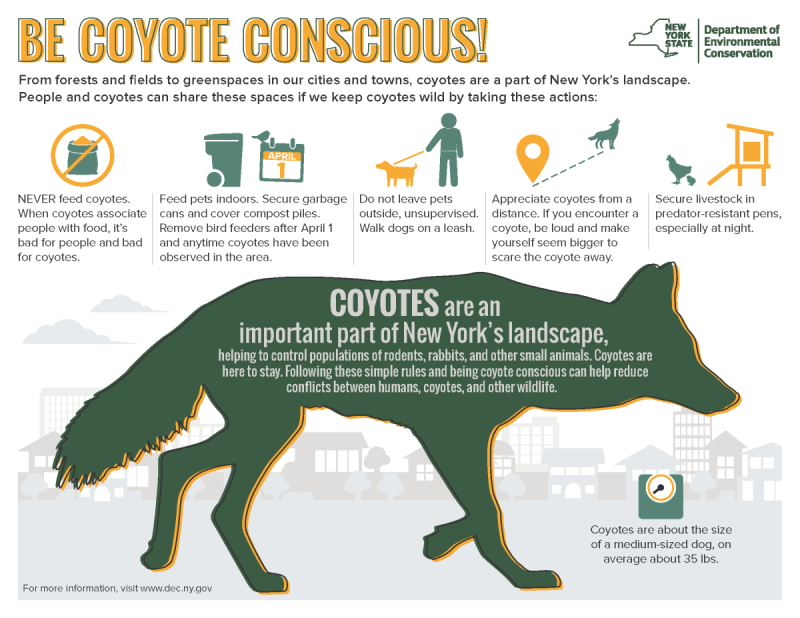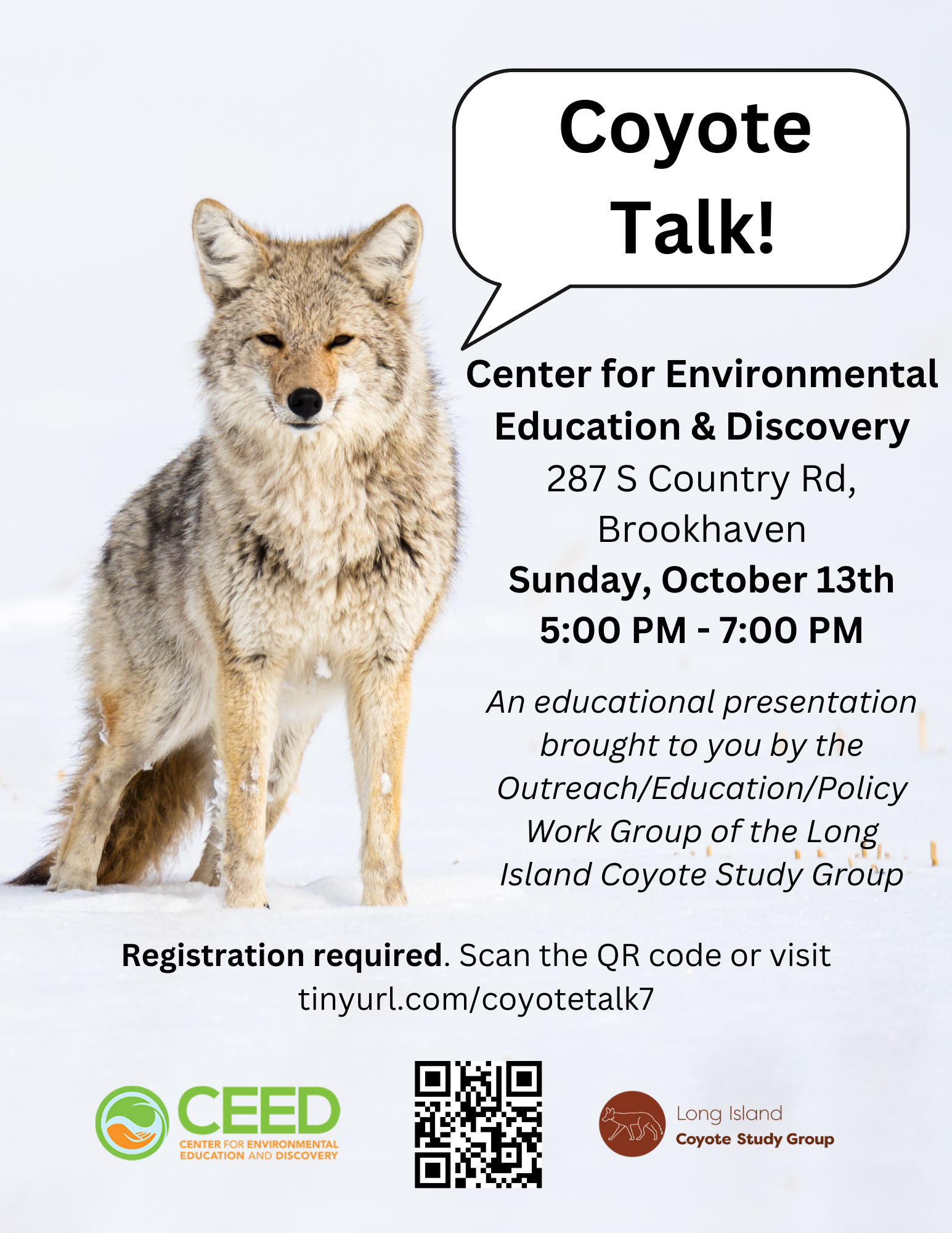
Meet the North Fork’s newest resident, the Eastern Coyote.
Next Coyote Talk!
Sunday, October 13th 5:00-7:00 Join members from the Long Island Coyote Study Group (LICSG) for a short presentation and open discussion on coyote migration! LICSG members include:
Arielle Santos, Seatuck Environmental Association
Jennifer Murray, Turtleback Environmental Education Center
Frank Vincenti, Wild Dog Foundation
Dr. Lisa Filippi, Hofstra University
Dr. Hildur Palsdottir, Science Museum of Long Island
This event is free and open to the public.
LOCATION:
Center for Environmental Education & Discovery
287 S Country Rd, Brookhaven
The Eastern Coyote
-

Natural History
“While coyotes are now widespread in New York, they only recently became established here. Interestingly, they did not enter from the west as one might expect, but instead passed through Canada north of the Great Lakes before turning south into northern New York. By the late 1930s and '40s, coyotes were established in Franklin County, and by the 1980s, coyotes were found throughout the state except in New York City and on Long Island.”
-

Eastern Coyote Genetics
Eastern Coyotes have been filling in the former range of wolves in Eastern North America. While we are not sure if Long Island was inhabited by Red Wolves or Timber Wolves, it appears the Eastern Coyote is returning to Long Island with a different genetic make up.
64% of the Eastern Coyote’s genome is coyote (Canis latrans), 13% is Gray Wolf (Canis lupus), 13% Eastern Wolf (Canis lycaon), 10% domestic dog (Canis familiaris)
-

Coexistence
“No wild animal in our community inspires such a wide range of human emotions as the Eastern coyote. Feared, cursed, and admired too, coyotes are among the most controversial critters in the northeastern United States.”
“Americans are fortunate to have an enormous diversity of wildlife sharing the landscape with us. However, as human populations continue to encroach into natural habitats, modifying our own behavior is key to peaceful coexistence. Here are some tips on how you can be proactive.”
Have you seen a coyote? Report your sighting!
-
Learn more about coyotes on Long Island and the study group HERE.
-
Report sightings on the Coyote Tracker
If you live on the North Fork, you can contact Jennifer Murray (LI Coyote Study Group: Nort Fork) with your sighting.
-
Coyotes play an important role in maintaining healthy ecosystems and species diversity. If you are interested in learning more, attend an upcoming discussion on coyotes or get updates via email.
Be a Good Neighbor!
How to coexist with coyotes on Long Island and help avoid conflicts
Avoid attracting coyotes
Coyotes look for food and shelter, so avoid anything that might attract them to your yard
Make sure any trash/compost/waste is secured if stored outdoors and try not to leave it out for long periods of time
Keep any sheltered areas cleared out and closed off if possible, such as crawl spaces under porches, outdoor sheds, etc.
If you have bird feeders, make sure the food is stored securely and regularly clean the areas around feeders, seeds on the ground invite small mammals like squirrels that attract coyotes
Keep family and pets safe
Coyotes very rarely attack humans and have a natural aversion to people
When dealing with a coyote, never turn and run from them because that can trigger their instinct to chase you
Keep small pets on leashes when walking them, especially at dusk or nighttime
Do not leave small pets alone and unmonitored in your yard, especially at dusk or nighttime
Scare off curious coyotes (hazing)
If you do see coyotes in your area/property, make them feel uncomfortable until they leave, so that they are less likely to return
Look big and be loud, yell at the coyote and advance towards it slowly until it completely leaves the area
You can bang pots and pans, use noise makers or whistles, or spray a hose at it
If the coyote is not moving or keeps stopping and turning to look at you, continue this behavior because they will eventually run away
Throw small sticks or balls towards (not at) the coyote to scare them away
You want to make them feel unwelcome/unsafe without actually causing any harm
If you continue to do this when you see coyotes, they will stop returning for whatever thing they wanted there in the first place (usually food or shelter)
For more advice, click here to read NYS DEC’s guidance for avoid conflicts with coyotes.
Additional Resources:
New York State Conservationist Magazine: The Rise of the Coyote
Wolf Conservation Center: Eastern Coyotes
Coexisting with Coyotes: Hazing Guide
Coyote Management and Coexistence Plan
Prevent Conflicts with Coyotes
A Closer Look at Coyotes - VT Fish & Wildlife




